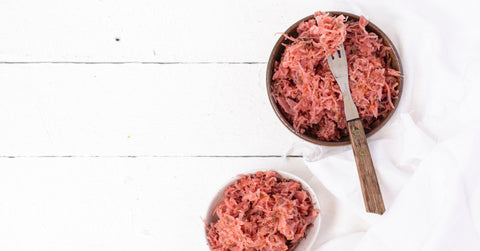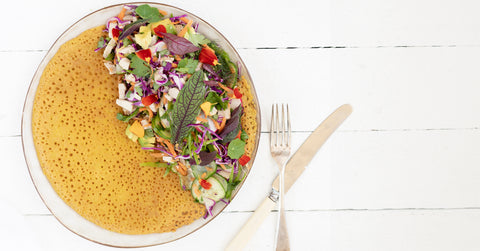Having a robust microbiome is important for detoxification and overall wellbeing.
So what does a robust microbiome look like? Our gut microbiota is made up of tens of trillions of microorganisms. Healthy adult humans each typically host more than 1000 different species of bacteria in their gut, which can weigh up to 2kg!
While a third of the species in our gut microbiota is common among most people, the other two-thirds are completely unique & individual to each person. Our microbiome plays a crucial role in digestion & immunity. It’s also been linked to weight, food sensitivities, mood, behavior & some diseases.1
Our microbiome is particularly important when it comes to detoxification, as some specific strains of bad gut bacteria can actually reverse the transformation that occurs in phase 1 & 2, therefore converting the toxic compounds back to their original form and causing even more damage. To prevent this from occurring, it’s important to eat foods that promote a healthy gut microbiome.
Two key dietary foundations of good gut health are probiotics & prebiotics.
Probiotic-Rich Foods
Probiotic-rich fermented foods contain living beneficial bacteria and yeasts which, when you eat them, can colonise in your digestive tract. The act of fermentation has a number of additional benefits! It also reduces the sugar content of the food, removes toxic or undesirable constituents like phytic acid, increases the food’s stability and inhibits some foodborne pathogens.
Examples of fermented foods which have a probiotic effect include;
- Vegetable: sauerkraut, kimchi, some chutneys.
- Dairy (or dairy alternative): kefir, yoghurt, cheese, cultured butter.
- Soy: tempeh, miso, natto, tamari.
- Beverage: water kefir, kombucha, jun, beet kvass, apple cider vinegar.
It’s really important to note that heat kills the good bacteria in these foods. So fermented foods like bread or pasteurized sauerkraut don’t actually contain any beneficial bacteria. If you’re buying fermented foods, they will generally be stored in the fridge & just check the label to make sure they haven’t been pasteurised (heated).
Prebiotic-Rich Foods
Prebiotics are a group of indigestible fibers or starches that are fermented by our “good” bacteria in the large intestine. You can think of prebiotics as the food source of probiotics - when we consume these prebiotics, they stimulate the growth & activity of our beneficial gut bacteria, specifically bifidobacteria & lactobacilli. In fact, it’s estimated that around 30g of bacteria are produced for every 100 g of prebiotics that are fermented.2
When prebiotics are fermented in the bowels, they produce compounds called short-chain fatty acids (SCFA). SCFAs appear to be key mediators of the beneficial effects elicited by the gut microbiome. Not only does dietary fibre fermentation regulate microbial activity in the gut, but SCFAs also directly modulate host health through a range of mechanisms related to gut barrier function, blood glucose levels, immunomodulation, appetite regulation and obesity.3
Prebiotics which are fibres that are fermented in the bowels, these include Jerusalem artichoke, chicory root, flaxseed, dandelion greens, garlic, leeks, onions, yacon, asparagus, grains (particularly barley, oats), apples, konjac root (typically consumed as konjac noodles), seaweeds & algaes.
Another group of starches that have a prebiotic effect are "resistant" starches. As the name suggests, these are not able to be digested & instead are fermented in the colon. There are 3 main types which you can get from food;
- Type 1: physically inaccessible starch found in the fibrous cell walls of legumes, grains, nuts & seeds.
- Type 2: resistant starch granules found in raw green banana, plantain, cassava.
- Type 3: retrograded starches found in specific foods when they are cooked and then cooled such as rice, potato, sweet potatoes, yams and some whole grains. For example, baked potato contains 3.6/100g resistant starch, but when it’s baked & then cooled, it contains around 4.3/100g. Cooked rice, on the other hand, has 0.64g/100g when cooked & 1.65g/100g when cooked & cooled for 24 hours at 4C 4,5



